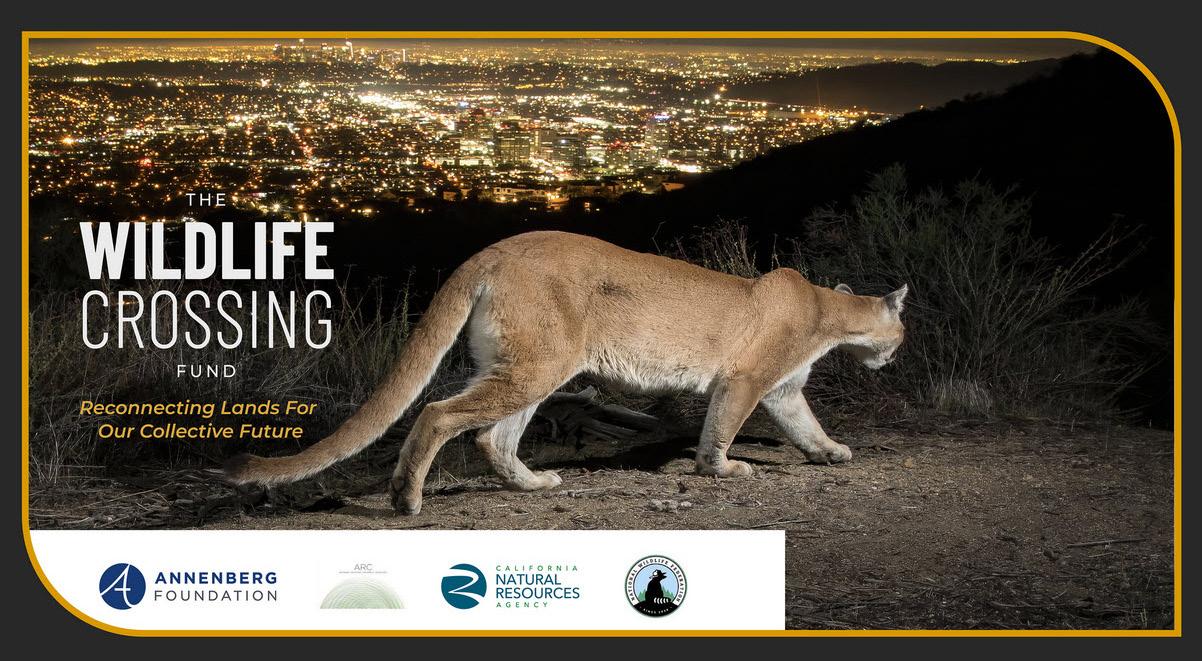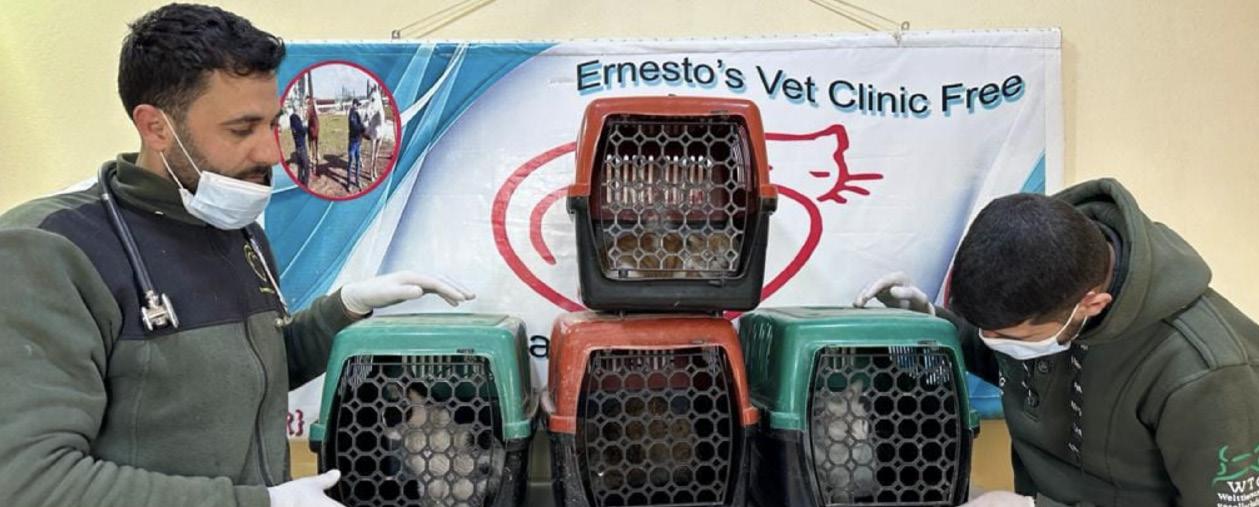
4 minute read
IN THE NEWS
On Saturday, February 4th, the Greek Theatre at Griffith Park, Los Angeles, hosted an event called, “P-22 Celebration of Life,” to commemorate the passing of P-22, one of Griffith Park’s most famous and beloved residents. The Greek Theatre seats 5,900-6,000 guests. Tickets to the event were free and available online through Ticketmaster. Within two hours of the box office opening, tickets were “sold out.” Arguably, the “P-22 Celebration of Life” is the largest gathering to date to honor a single animal. One of P-22’s legacies is the Wallis Annenberg Wildlife Crossing, being built across the Ventura Freeway (US101) at Liberty Canyon. It is scheduled to be completed by 2025. Hopefully, it will be followed by many more.
At the “P-22 Celebration of Life” event, it was announced to attendees that a new Wildlife Crossing Fund was being launched, “a campaign that aims to accelerate the building of wildlife crossings across California, the United States, and the world and reconnect lands for our collective future.” The goal is to raise half a billion dollars from private philanthropy. Founding partners include the Annenberg Foundation, the National Wildlife Federation, the California Natural Resources Agency, Dayna Bochco, and ARC (Animal Road Crossings.) These private funds will leverage with public dollars to advance the building of needed wildlife crossings.
Advertisement
The State of California is committed to doing its part in this endeavor. California Natural Resources Agency Secretary Wade Crowfoot stated, ““P-22 inspired and mobilized people around the world to protect nature and wild animals. Now, his legacy will drive a growing movement to connect these animals across our roads and communities. In California, we’re all in on the inspirational partnership between philanthropy and government that the Wallis Annenberg Foundation has catalyzed. California is committing more than $100 million to match philanthropic investment in the newly announced Crossing Fund. Working all together, we will show the world how people and nature can thrive together.”
Collin O’Mara, president and CEO of the National Wildlife Federation remarked, “The Wallis Annenberg Wildlife Crossing is a world-class example of what’s possible when philanthropic organizations, conservation leaders, and the public sector work together for solutions to the wildlife crisis. This new fund will ensure that the L.A. crossing is not a one-off project, but rather a success that we replicate again and again to protect people and wildlife alike, reconnect fragmented ecosystems, and ensure wildlife like P-22 can safely traverse our built landscapes. We are proud to join with the Annenberg Foundation and the State of California to launch this important fund that will catalyze solutions across the continent to ensure people and wildlife thrive together.”
“Studies have shown that roadway infrastructure fractures and disrupts ecosystems, wreaking havoc on wildlife and creating hazards for drivers. The Wildlife Crossing Fund will allow for the creation of infrastructure and landscape connectivity projects across California, the United States and beyond for the benefit of wildlife and biodiversity, the safety and welfare of communities – all while addressing climate change through adaptation and resilience,” according to a recent press release from the National Wildlife Federation.
The press release continued, “Wildlife crossings also come with vast economic benefits. As the organization ARC: Animal Road Crossings published in a recent report, ‘every year in the United States, there are 1-2 million wildlife-vehicle collisions that cause 200 human fatalities, 26,000 injuries, and cost $9.7 billion. The costs of collisions to society often outweigh the costs of building wildlife crossing structures. Placing structures along road segments with as few as 5.1 deer collisions per mile per year creates net benefits.’ As green infrastructure projects, wildlife crossings also offer economic stimulus that provides jobs and other benefits to the economy. Caltrans estimates that in transportation, for every $1 billion spent, 13,000 jobs are created, and a Florida DOT study found that the state’s transportation projects were estimated to yield an average $4 of benefits for every $1 invested.
“’To honor P-22’s legacy, to reconnect people and nature, we need to hold fast to what he taught us. As much as we need science, innovation, and community engagement, the most important thing we can do is to lead with landscape. A protected landscape is a connected landscape, and good design is done in the spirit of coexistence and kinship for the benefit of wildlife and people,’ said Nina-Marie Lister, ARC Solutions Partner, Professor of Urban Planning and Director of the Ecological Design Lab at Toronto Metropolitan University, and Visiting Professor of Landscape Architecture, Harvard University, Graduate School of Design. ‘ARC is excited to work with the State of California because it has shown it can lead the way. We are ready to go forward and go global, so we can create a system of connected and protected landscapes, together.’”
Global News
At the time of writing, upwards of 41,000 people have been killed as a result of the magnitude 7.8 earthquake which struck Syria and Turkey on February 6th. In addition to the loss of human lives, and property damage estimated at $50-85 billion, animals in the affected region have suffered greatly. Fortunately, the International Fund for Animal Welfare has once again come to the aid of animals hit by natural disaster. To quote in part from IFAW’s press release, “Immediately after the earthquake hit, IFAW reached out to Haytap, an animal rescue organization in Turkey, and House of Cats Ernesto in Syria to ensure all staff and sanctuary animals were safe and to offer emergency support.
“IFAW has committed $50,000 to launch its relief work in the two countries. Initial emergency grant funds will be used by the organizations to assess the hardest-hit communities, rescue animals in crisis and provide aid to animals in need.”
To make a contribution to IFAW’s work in this region, go to: DONATE











